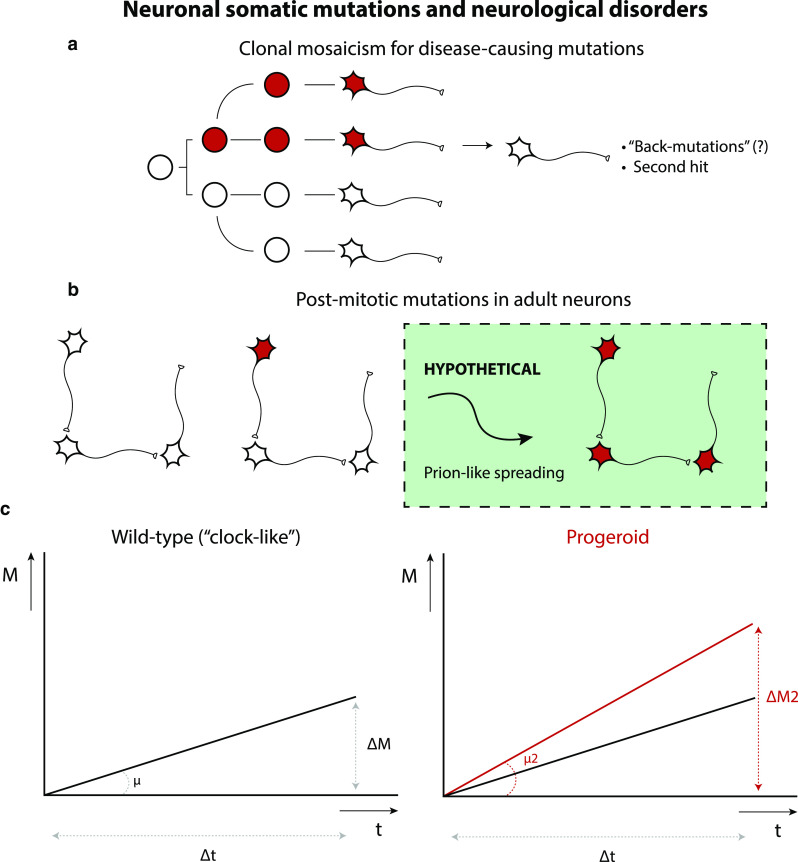Fig. 4.

Neuronal somatic mutations and neurological disorders. Somatic mutations in neurons could cause or predispose for neuronal diseases. Neuronal somatic mutations can either occur in neuronal progenitors, giving rise to mutant daughter cells through clonal expansion of these mutation-carrying cells (a) or in post-mitotic neurons (b), resulting in very fine changes in the nervous system. A combination of both might reflect an intriguing mechanistic link between developmental and degenerative brain disorders. Neuron-to-neuron spreading of pathological proteins could provide an explanation for widespread pathology induced by single-neuron DNA mutations, but this model is purely hypothetical as of now. c Somatic mutations have been found to accumulate in neurons as a function of age. Neuronal somatic mutation accumulation could be a general hallmark of neuronal aging. In DNA repair disorders (Cockayne syndrome, Xeroderma pigmentosum) increased rates of somatic mutations (μ) have been observed (“progeroid” phenotype). Increased rates of somatic mutation in single neurons could be important for other neurodegenerative disorders and may also accelerate neuronal aging itself
